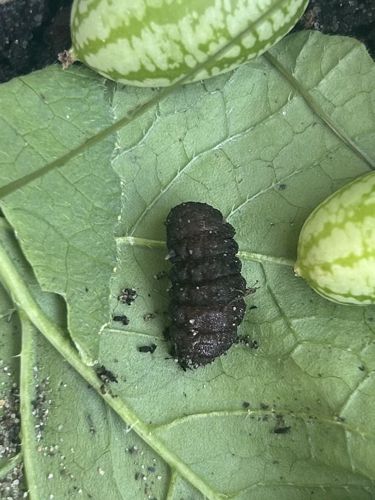Likely a Cutworm or other large beetle larva
Scientific Name: Too difficult to determine from image alone (e.g., Agrotis spp. for cutworms).
Order & Family: Order: Lepidoptera (Moths) or Coleoptera (Beetles), Family varies greatly depending on exact species (e.g., Noctuidae for cutworms, Scarabaeidae for some beetle larvae). Based on the image, it's difficult to pinpoint the exact family without more detail.
Size: Larvae can range from 20-50 mm (0.8-2 inches) in length, depending on the species and developmental stage.

Natural Habitat
Typically found in soil, under leaf litter, or at the base of plants. They prefer damp and sheltered environments.
Diet & Feeding
Mainly herbivorous, feeding on plant roots, stems, and leaves, often at ground level. Some can be significant agricultural pests.
Behavior Patterns
Larvae are primarily active at night, feeding on plant matter. They undergo complete metamorphosis, turning into pupae in the soil before emerging as adult moths or beetles. Some species are known to curl into a 'C' shape when disturbed.
Risks & Benefits
Risks: Many species, especially cutworms, are agricultural pests that can cause significant damage to crops by severing young plants at or below the soil surface. Benefits: Some ground-dwelling beetle larvae can be important in nutrient cycling and soil aeration.
Identified on: 8/24/2025